Formas de evitar que una batería de 12 V se sobrecargue
Evitar la sobrecarga de su batería de 12 V es esencial para maximizar su vida útil, garantizar la seguridad y mantener un rendimiento constante. La sobrecarga puede provocar la hinchazón de la batería, la pérdida de líquido e incluso situaciones peligrosas como incendios o explosiones. En este artículo, exploraremos métodos fiables y prácticos para evitar la sobrecarga de una batería de 12 V, abarcando desde los tipos de baterías hasta las técnicas de carga adecuadas, las herramientas y las mejores prácticas.
- Comprensión de los conceptos básicos de una batería de 12 V
- Por qué es peligroso sobrecargar una batería
- Herramientas que ayudan a prevenir la sobrecarga de la batería de 12 V
- Mejores prácticas de carga para proteger su batería de 12 V
- Señales de que su batería podría estar sobrecargada
- El papel de la temperatura en la carga de la batería
- Consejos de mantenimiento de la batería para evitar la sobrecarga
- Consejos para prevenir sobrecargas específicas de la batería
- Integración de la automatización para detener la sobrecarga de la batería
- ¿Qué sucede si se continúa sobrecargando una batería?
- Cómo elegir la batería adecuada para su aplicación
- Consejos para usuarios de energía solar para evitar la sobrecarga
- Productos recomendados que previenen la sobrecarga de la batería de 12 V
- La seguridad de la batería comienza con la carga inteligente
Comprensión de los conceptos básicos de una batería de 12 V
Para prevenir eficazmente la sobrecarga, es fundamental comprender el funcionamiento de una batería de 12 V. Una batería típica de 12 V se compone de seis celdas de 2 V conectadas en serie. Almacena energía eléctrica mediante una reacción química y la libera cuando es necesaria. Estas baterías se utilizan comúnmente en automóviles, embarcaciones, vehículos recreativos, sistemas de energía solar y aplicaciones de energía de respaldo.
Existen varios tipos de baterías de 12 V:
Baterías de plomo-ácido: incluidas las baterías inundadas, AGM (Absorbent Glass Mat) y de gel.
Baterías de iones de litio: conocidas por su alta densidad energética, menor peso y mayor vida útil.
Baterías a base de níquel: como NiMH y NiCd, aunque se utilizan con menos frecuencia en aplicaciones de 12 V.
Cada tipo de batería tiene sus propios requisitos de carga y vulnerabilidades cuando se trata de sobrecarga.
>>Ver también ¿Cuál es la corriente de carga recomendada para una batería de 12 V 7 Ah?
Por qué es peligroso sobrecargar una batería
Sobrecargar una batería provoca calor excesivo y acumulación de gases. En las baterías de plomo-ácido, esto provoca pérdida de agua y daños internos, mientras que las baterías de litio pueden incendiarse si falla el circuito de protección. A continuación, se detallan los posibles efectos de la sobrecarga:
Vida útil reducida: la sobrecarga constante acorta drásticamente la vida útil de la batería.
Hinchazón o fugas de la batería: una presión interna excesiva puede deformar la carcasa de la batería.
Peligros de incendio: especialmente en baterías de iones de litio, donde el descontrol térmico supone un riesgo.
Daños electrónicos: una batería que funciona mal o está sobrecargada puede dañar los dispositivos conectados.
Por eso es vital utilizar métodos de carga inteligentes y mecanismos de seguridad.
Herramientas que ayudan a prevenir la sobrecarga de la batería de 12 V
Cargadores de batería inteligentes
Un cargador inteligente ajusta automáticamente el voltaje y la corriente de carga según el estado de la batería. Previene la sobrecarga entrando en modo de flotación o mantenimiento una vez que la batería está completamente cargada.
Características clave a tener en cuenta:
Apagado automático
Carga multietapa (masa, absorción, flotación)
Selección del tipo de batería (AGM, Gel, Litio)
Protección contra sobrecargas
Compensación de temperatura
Sistemas de gestión de baterías (BMS)
Un sistema de gestión de baterías es esencial para las baterías de litio. Monitorea cada celda y controla el proceso de carga/descarga. Si el voltaje, la corriente o la temperatura superan los límites de seguridad, el BMS desconecta el cargador o la carga.
Controladores de carga (para sistemas solares)
Si utiliza una instalación de paneles solares, es imprescindible contar con un controlador de carga. Este regula el voltaje y la corriente de los paneles solares para evitar la sobrecarga de la batería.
Hay dos tipos:
PWM (modulación por ancho de pulso): básico pero confiable.
MPPT (Seguimiento del punto de máxima potencia): más eficiente y adecuado para sistemas de alta potencia.
Mejores prácticas de carga para proteger su batería de 12 V
Cargador compatible con el tipo de batería
Utilice siempre un cargador compatible con la composición química de su batería. Por ejemplo, las baterías de litio requieren un cargador de corriente/voltaje constante (CC/CV) con una regulación precisa del voltaje. Usar un cargador incorrecto puede provocar fácilmente una sobrecarga.
Monitorizar el voltaje y la corriente
Para una batería de plomo-ácido de 12 V:
Voltaje de carga completa: 12,6 V a 12,8 V
Voltaje de flotación: alrededor de 13,2 V
Nunca exceda: 14,4 V (para inundadas), 14,2 V (para AGM/Gel)
Para una batería de litio de 12 V:
Completamente cargada: 12,6 V a 13,6 V (dependiendo de las celdas)
Voltaje de corte: 14,6 V (el más común)
Utilice un multímetro o un monitor de batería para comprobar periódicamente los niveles de voltaje.
Evite la carga lenta y continua
Dejar la batería de 12 V en un cargador de mantenimiento indefinidamente puede causar una sobrecarga gradual si el cargador no tiene modo de flotación automático. En su lugar, utilice un cargador de mantenimiento o inteligente con regulación de voltaje.
Señales de que su batería podría estar sobrecargada
Si su batería de 12 V está sobrecargada, es posible que note lo siguiente:
Calor inusual durante o después de la carga
La batería se hincha o abulta
Fuga de electrolitos (en baterías inundadas)
Sonidos silbantes o gorgoteos
Lecturas de voltaje excesivamente altas
Tiempos de funcionamiento más cortos o falla repentina de la batería
Si ocurre alguno de estos signos, detenga la carga inmediatamente e inspeccione el estado tanto del cargador como de la batería.
El papel de la temperatura en la carga de la batería
La temperatura afecta considerablemente el comportamiento de carga. En climas fríos, la resistencia interna de la batería aumenta, lo que dificulta su carga. En climas cálidos, la sobrecarga puede ocurrir con mayor facilidad.
Soluciones:
Utilice cargadores con compensación de temperatura
Instalar sensores térmicos cerca de las baterías
Evite cargar cuando la temperatura de la batería sea inferior a 0 °C o superior a 45 °C
Coloque las baterías en recintos ventilados
Para instalaciones solares, considere ubicaciones sombreadas para la batería y el controlador para evitar el sobrecalentamiento.
Consejos de mantenimiento de la batería para evitar la sobrecarga
Inspección regular
Compruebe si hay corrosión en los terminales
Inspeccione la carcasa de la batería para detectar hinchazones o grietas.
Asegúrese de que se mantenga el nivel de electrolito (en tipos inundados)
Mantenga la batería limpia
La suciedad o la humedad pueden provocar fugas de corriente entre los terminales, lo que afecta la precisión de la carga. Mantenga la parte superior de la batería seca y limpia.
Almacenar en el voltaje correcto
Al almacenar una batería de 12 V:
Plomo-ácido: cargar a 12,6 V–12,8 V antes de almacenar
Litio: Almacenar con una carga del 40% al 60% (alrededor de 12,0 V a 12,4 V)
Desconéctese de cualquier carga o drenaje parásito.
Cargue la batería cada 3 a 6 meses durante el almacenamiento a largo plazo para evitar la sulfatación o la descarga profunda.
Consejos para prevenir sobrecargas específicas de la batería
Batería de plomo-ácido de 12 V
Utilice cargadores de 3 etapas (a granel, absorción, flotación)
Evite voltajes superiores a 14,4 V
Verificar niveles de agua en tipos inundados
No cargar cuando esté profundamente congelado
Batería AGM y Gel de 12 V
Configure el cargador en modo “AGM/Gel”
Evite el modo de ecualización (puede dañar las celdas de gel)
Carga de flotación alrededor de 13,2 V
Batería de litio de 12 V
Utilice un cargador con corte de 14,6 V
Asegúrese de que exista un BMS confiable
No utilice cargadores de modo plomo-ácido
No cargar por debajo de 0°C
Integración de la automatización para detener la sobrecarga de la batería
Uso de relés o contactores
Los relés pueden desconectar automáticamente el cargador al alcanzar un determinado voltaje. Son especialmente útiles en sistemas de bricolaje o instalaciones aisladas de la red eléctrica.
Monitores de batería de IoT
Los monitores de batería conectados a Internet le permiten:
Establecer alertas de voltaje
Detener la carga de forma remota
Registrar ciclos de carga y descarga
Predecir fallas de la batería según tendencias históricas
Marcas como Victron, Renogy y Battle Born ofrecen sistemas con monitoreo basado en aplicaciones.
¿Qué sucede si se continúa sobrecargando una batería?
Con el tiempo, la sobrecarga constante puede:
Descomponer las placas internas de la batería
Provoca sulfatación permanente
Provocar una pérdida total de capacidad
Representan amenazas a la seguridad de las personas y los equipos.
En aplicaciones críticas como dispositivos médicos, sistemas solares de respaldo o vehículos recreativos, la sobrecarga puede ocasionar costosas reparaciones o interrupciones del servicio. Por lo tanto, siempre es mejor invertir en prevención.
Cómo elegir la batería adecuada para su aplicación
Algunos tipos de baterías son más tolerantes a errores de carga. A continuación, se muestra una comparación:
|
Tipo de batería |
Tolerancia de sobrecarga |
Seguridad |
Mantenimiento |
|
Plomo-ácido inundado |
Bajo |
Medio |
Alto |
|
Asamblea General Anual |
Medio |
Alto |
Bajo |
|
Gel |
Bajo |
Alto |
Bajo |
|
Litio |
Bajo (sin BMS) |
Muy alto (con BMS) |
Muy bajo |
Si utiliza la batería en configuraciones remotas o sin supervisión, el litio con BMS o AGM suele ser la opción más segura.
>>Vea también Cómo reparar un hoverboard y qué esperar del proceso
Consejos para usuarios de energía solar para evitar la sobrecarga
Utilice siempre un controlador de carga MPPT o PWM
Establezca límites de voltaje adecuados en la configuración del controlador
Monitorear diariamente la salida del panel solar frente al voltaje de la batería
Utilice un banco de baterías cuyo tamaño coincida con la entrada solar
No omita los controladores de carga, ni siquiera para realizar pruebas
Productos recomendados que previenen la sobrecarga de la batería de 12 V
A continuación se muestran algunos cargadores y sistemas confiables que pueden ayudar:
1. NOCO Genius 10 : un cargador inteligente de 10 A para baterías de plomo-ácido y litio de 12 V.
2. Victron SmartSolar MPPT : controlador de carga solar premium con monitoreo Bluetooth.
3. Renogy Rover Elite 40A MPPT : MPPT asequible con funciones de seguridad avanzadas.
4. Battery Tender Plus : popular cargador de mantenimiento con modo de flotación.
5. DALY o JBD BMS : marcas confiables para la protección de baterías de litio.
Siempre verifique la compatibilidad con su tipo de batería antes de comprarla.
La seguridad de las baterías comienza con la carga inteligente
En resumen, evitar la sobrecarga de una batería de 12 V no es complicado: se trata de usar las herramientas adecuadas, seguir las prácticas correctas y revisar el sistema con regularidad. Ya sea que use baterías de plomo-ácido o de litio, un poco de atención y cuidado contribuirá en gran medida a prolongar la vida útil de la batería y proteger su inversión.
La sobrecarga no solo perjudica la salud de la batería, sino que también puede suponer graves riesgos. Al comprender las señales de sobrecarga, usar cargadores inteligentes e integrar mecanismos de seguridad como BMS y controladores de carga, ya está un paso adelante.
Entonces, si se ha estado preguntando cómo evitar que su batería de 12 V se sobrecargue, ahora sabe qué pasos tomar, porque una batería bien mantenida es una batería confiable.

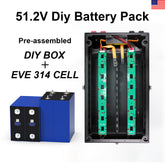

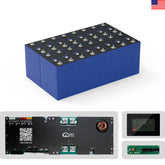

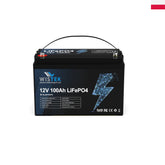

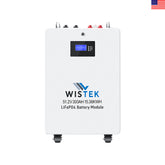
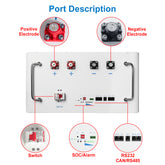
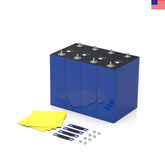



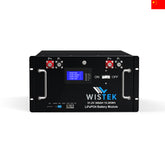
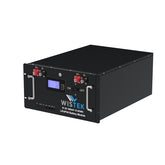
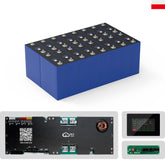








Leave a comment
All blog comments are checked prior to publishing